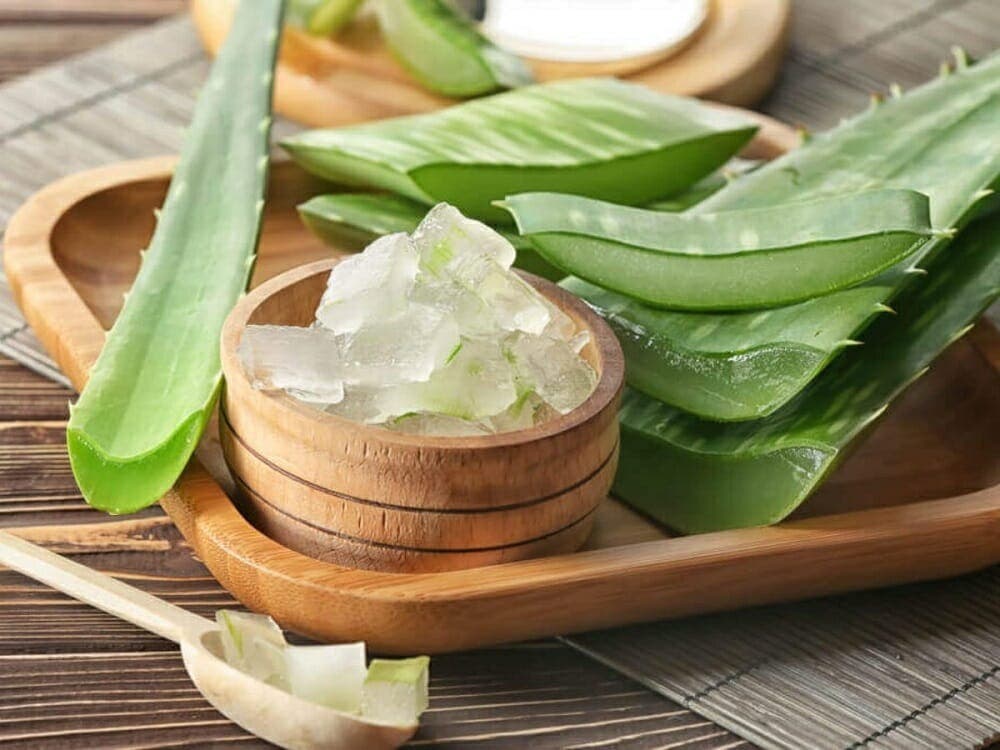For thousands of years, aloe vera has been one of the most common medicinal plants used by humans. Historians have found evidence of aloe vera use dating back to 2200 BC. In Mesopotamia , where clay tablets carved with Sumerian hieroglyphs mentioned the use of the plant for medicinal purposes. Eating aloe vera is also believed to have been a common eating habit in ancient Egypt, Greece, and China.
Today, aloe vera is still popular, mainly for topical use : who has not used aloe vera gel after suffering a nasty sunburn? But, although the use of aloe for burns is the most common, there are many more: from the use of its gel to relieve cold sores to as a home remedy to relieve psoriasis.
However, some people do not know that aloe vera is edible . If you wonder if you can eat aloe vera, the answer is yes, but always following some safety measures that you should take into account before trying it.
Is it safe to eat aloe vera?
First, let’s take a look at the leaf parts of the plant so that you can understand how to eat aloe vera safely .
The gel
When people ask themselves: “Can you eat aloe vera?”, They are most likely wondering how to ingest the gel. Eating the inside of the aloe vera leaf is safe and has multiple health benefits as well. This substance is packed with antioxidants, as well as vitamins A, B12, C and E. It also contains folic acid and choline.

The skin
There is not much concrete research on eating the skin of the aloe vera plant, but it is considered relatively safe .
What you need to consider is where and how the plant was grown . Leaf skin may be contaminated with aerosols and pesticides. If you are going to eat the skin, it is advisable to wash it well beforehand .
The latex layer between the skin and the gel
Although we generally think of latex as a synthetic material used in consumer goods, this material can exist in nature and is produced by many different types of plants, including the aloe vera plant.
The latex coating of aloe vera is neither edible nor safe to consume , as it contains aloin, a chemical that can cause an upset stomach and diarrhea . In large quantities, it can be very dangerous. This layer of latex must be removed if you are going to eat the skin or the plant gel.
Benefits of eating aloe vera
There are many benefits of eating aloe vera. These are some of the ones that have been backed by science.
Decreases heartburn
Some people with heartburn / gastroesophageal reflux disease (GERD) find some relief from their symptoms by eating aloe vera in small amounts. Another of its benefits is that it reduces the frequency of GERD symptoms without adverse effects .
Reduces cholesterol levels
Studies show that ingesting aloe vera can lower LDL (bad cholesterol) and increase HDL (good cholesterol). This effect is because the components of aloe vera gel can bind to cholesterol in the intestines. This fortification prevents cholesterol from being absorbed into the bloodstream.
Helps control blood sugar
Research on aloe vera and diabetes concludes that aloe can help with blood sugar regulation, reducing fasting blood glucose levels.
Boosts the immune system
Several studies have found that aloe vera can improve the response of the body’s immune system , which can make you have a better ability to fight infections.
Risks of eating aloe vera
Aloe vera is refreshing and excellent for your health, but there are potential risks regarding its consumption in certain cases. If you are pregnant, you should not ingest aloe , as it could cause uterine contractions. Eating or drinking aloe is also discouraged if you are breastfeeding.
The aloin found in the plant’s latex coating is dangerous to eat, no matter the circumstances. The diarrhea it can cause can lead to dehydration and loss of electrolytes .

If you’re not confident in your ability to remove aloin yourself, you should go for store-bought, food-grade aloe . This type of product can make you feel more comfortable eating aloe vera and reduce its risks. Also, you will know more about its origin, as if it is organic and natural.
As long as you are preparing fresh aloe vera leaves in the correct way or consuming high quality aloe vera both to mix with other foods and to make juice, you will be taking advantage of the benefits of the plant .
References
- Ahlawat, KS, & Khatkar, BS (2014, June 21). Processing, food applications and safety of aloe vera products: A review . ResearchGate. https://www.researchgate.net/publication/236189383_Processing_food_applications_and_safety_of_aloe_vera_products_A_review.
- Dick, WR, Fletcher, EA, & Shah, SA (2016). Reduction of Fasting Blood Glucose and Hemoglobin A1c Using Oral Aloe Vera: A Meta-Analysis. The Journal of Alternative and Complementary Medicine , 22 (6), 450–457. https://doi.org/10.1089/acm.2015.0122.
- Rahmani, A., Aldebasi, Y., Srikar, S., Khan, A., & Aly, S. (2015). Aloe vera: Potential candidate in health management via modulation of biological activities. Pharmacognosy Reviews , 9 (18), 120. https://doi.org/10.4103/0973-7847.162118.
